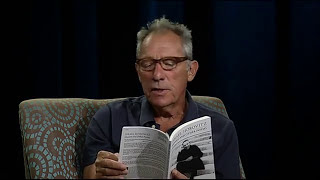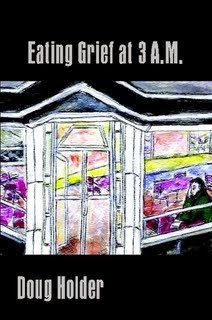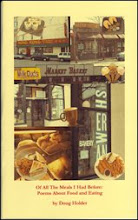By Doug Holder
Gil Barbosa is a
survivor. The owner of "The Book Shop" in Ball Square in Somerville
has kept his store alive during a time when many similar used bookstores have
had a rise and inevitable fall. Barbosa told me: “It is hard
to believe that three and a half years have gone by and we
are still here, and I am glad to have a very good landlord who understands and
is sympathetic to small businesses."
Barbosa's shop is a
small one, but it still carries a wide range of used and even new books
covering the Classics, Science Fiction, Murder Mysteries, Children's
Literature, and my favorite Poetry. In the Internet age one would think there
would be less of an interest in the physical book, but Barbosa would disagree,
“There is still a demand for the physical book. People want to support a
bookstore especially in this area with academics, young professionals and
students. Although younger folks gravitate to e-Books, they still want to have
a paperback in their hands,” he said.
In order to increase
traffic to his store, and the subsequent sales, Barbosa has started several book
clubs. They include a Science Fiction
Book Club, a Mystery and Crime Club (Local mystery writer Bert Robbens helped
with this one), and a new book club that will take the stage Jan. 27 at 7PM—the
Books to Movies Club. Barbosa said of these clubs: “We usually get about 20
people for these groups. The age range is wide, anywhere from the 20s to the
60s. People who attend these groups are from all walks of life—students,
authors, high tech folks, artists—you name it.” Barbosa continued: “These
groups are not only good for the store but I get a great deal of personal
enrichment from them.”
Over the years Barbosa
has had well-known authors appear at hhis store, including: Mystery writers
Hallie Ephron, Dennis Lehane, Dr. Michael Palmer and Linda Barnes.
The store also supports
a number of local artists. Tom Prince, a local picture framer, has a popular
selection of greeting cards in the store. Chie Yasuba, another local artist,
has a line of cards that caught my fancy. One card had a snippet of text that I
will quote:
“Live slow
Live Slow
Enjoy life.”
Words to live by—not
exactly Hallmark, now is it? Also Aaron Kovalcik has a card line titled “Monkey
Chow.’ Let’s just say they are a bit funny, and ghoulish.
As part of the Green
Line subway expansion that just got approved for federal financing, a train
will stop at a newly constructed station at Ball Square. Barbosa feels this may
happen in 2018 or before. Barbosa opined: “It’s a double-edged sword. It will
certainly bring more people to the square. That is good for business. But of
course rents will skyrocket and people will be displaced.”
Since I last spoke to
Barbosa, he said his taste in reading has changed. Originally he was a True
Crime fan, but now he said: “I like the Russians—you know—Tolstoy, Dostoevsky,
not to mention Charles Dickens, John Steinbeck, and I have even dabbled in
Shakespeare.
Barbosa smiled: “Hey,
life is too short to read bad books—know what I’m saying?” I certainly do—and
that’s the way it is—here—in the Paris of New England.


































